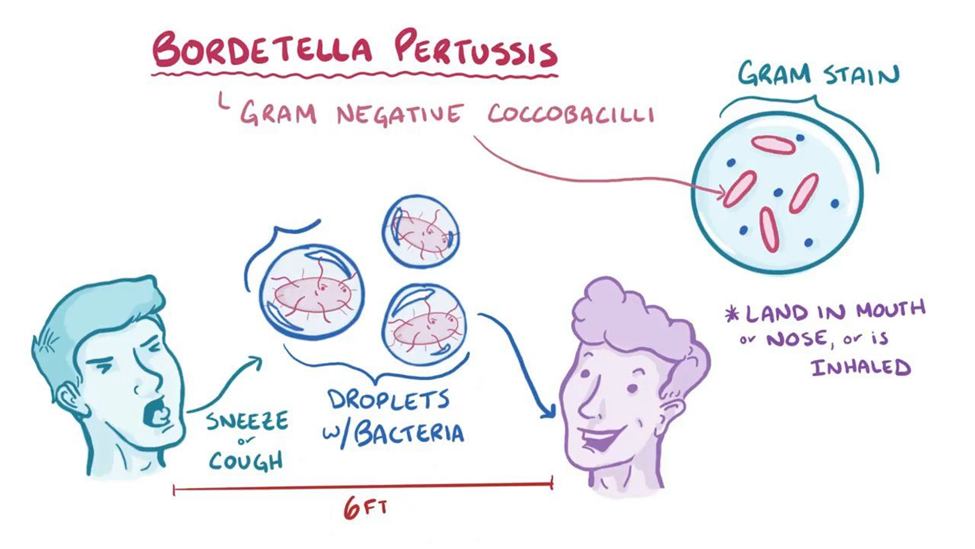A nurse is caring for a school-age child who has a prescription for amoxicillin 320 mg PO every 8 hr for 10 days. Available is amoxicillin suspension 400 mg/5 mL. How many mL should the nurse administer per dose? (Round the answer to the nearest whole number. Use a leading zero if it applies. Do not use a trailing zero.)
The Correct Answer is ["4"]
To calculate the dose of amoxicillin for a child, the nurse needs to use the following formula:
Dose (mL) = prescribed dose (mg) / concentration (mg/mL)
In this case, the prescribed dose is 320 mg and the concentration is 400 mg/5 mL. Plugging these values into the formula, we get:
Dose (mL) = 320 mg / (400 mg/5 mL)
Dose (mL) = 320 mg x (5 mL/400 mg)
Dose (mL) = 4 mL
Therefore, the nurse should administer 4 mL of amoxicillin suspension per dose.
Nursing Test Bank
Naxlex Comprehensive Predictor Exams
Related Questions
Correct Answer is A
Explanation
A. Droplet:
Pertussis is primarily transmitted through respiratory droplets when an infected person coughs or sneezes. Droplet precautions involve placing the child in a private room or with another child with the same infection. Healthcare workers should wear a mask or respirator when entering the room to protect against droplet transmission.
B. Contact:
Contact precautions are used for infections that can be spread by direct or indirect contact with the patient or their environment. Pertussis is not typically spread through contact with contaminated surfaces or objects.
C. Airborne:
Airborne precautions are used for infections that are transmitted through small droplet nuclei that remain in the air for long periods. Pertussis is primarily transmitted through larger respiratory droplets rather than tiny airborne particles.
D. Protective environment:
Protective environment precautions are used for patients who have weakened immune systems, such as those undergoing bone marrow transplants. These precautions are not applicable for a child with pertussis.

Correct Answer is D
Explanation
A. "Apply a dry gauze dressing twice per day."
This instruction may not be necessary for a hypospadias repair procedure. Typically, the surgical site will have a dressing applied immediately after the surgery, but ongoing dressing changes may not be required once the infant is discharged. It's essential to follow the specific postoperative care plan provided by the healthcare provider.
B. "Perform hourly measurements of the infant's urinary output."
Hourly measurements of urinary output may not be necessary unless specifically instructed by the healthcare provider due to concerns such as urinary retention or dehydration. However, regular monitoring of urinary output as part of routine care may be appropriate.
C. "Offer the infant 12 to 18 ounces of fruit juice daily."
Offering 12 to 18 ounces of fruit juice daily to a 6-month-old infant is not recommended. Introduction of fruit juice should be gradual and in small amounts, following guidance from healthcare providers and infant nutrition guidelines. Excessive fruit juice consumption can lead to gastrointestinal issues and may not be suitable for all infants.
D. "Avoid giving the infant a tub bath until the stent is removed."
This instruction is appropriate. After hypospadias repair surgery, a stent or catheter may be placed to aid in healing and ensure proper urine drainage. It's essential to follow healthcare provider instructions regarding bathing and hygiene to minimize the risk of infection and to ensure the stent remains in place until it is ready to be removed.
Whether you are a student looking to ace your exams or a practicing nurse seeking to enhance your expertise , our nursing education contents will empower you with the confidence and competence to make a difference in the lives of patients and become a respected leader in the healthcare field.
Visit Naxlex, invest in your future and unlock endless possibilities with our unparalleled nursing education contents today
Report Wrong Answer on the Current Question
Do you disagree with the answer? If yes, what is your expected answer? Explain.
Kindly be descriptive with the issue you are facing.
